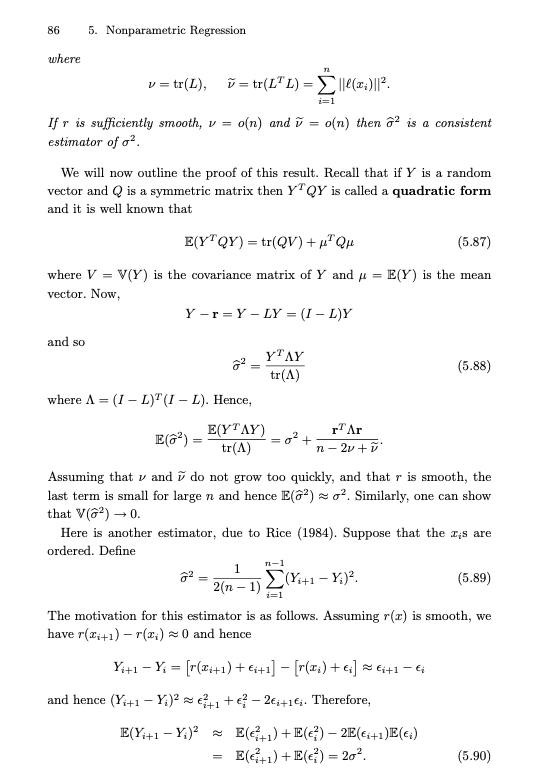Answered step by step
Verified Expert Solution
Question
1 Approved Answer
Show that with suitable smoothness assumptions on r(x), 2 in equation 2 (5.89) is a consistent estimator of . 86 5. Nonparametric Regression where T2
Show that with suitable smoothness assumptions on r(x), 2 in equation 2
(5.89) is a consistent estimator of .
Step by Step Solution
There are 3 Steps involved in it
Step: 1

Get Instant Access to Expert-Tailored Solutions
See step-by-step solutions with expert insights and AI powered tools for academic success
Step: 2

Step: 3

Ace Your Homework with AI
Get the answers you need in no time with our AI-driven, step-by-step assistance
Get Started


